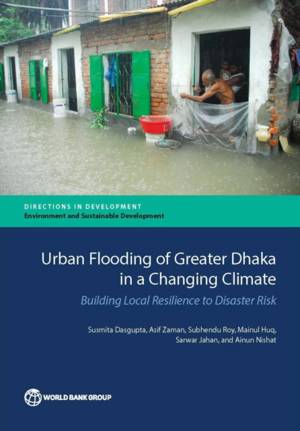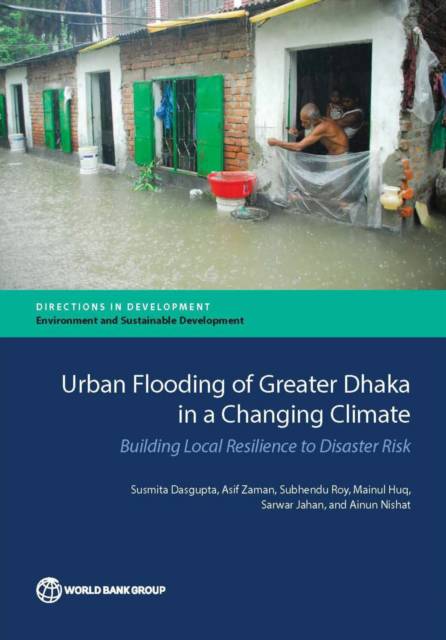
- Afhalen na 1 uur in een winkel met voorraad
- Gratis thuislevering in België vanaf € 30
- Ruim aanbod met 7 miljoen producten
- Afhalen na 1 uur in een winkel met voorraad
- Gratis thuislevering in België vanaf € 30
- Ruim aanbod met 7 miljoen producten
Zoeken
Urban Flooding of Greater Dhaka in a Changing Climate
Building Local Resilience to Disaster Risk
Susmita Dasgupta, Asif Zaman, Subhendu Roy, Mainul Huq, Sarwar Jahan, Ainun Nishat
€ 45,95
+ 91 punten
Omschrijving
Intense rainfall floods Dhaka, Bangladesh, one of the world's fastest-growing megacities, year in and year out, and those in the city's slums and shanties are usually the most affected. Low-lying flood plains, rivers, and canals that once drained water are gradually filling up as a result of indiscriminate urbanization and now magnify rather than help solve the problem. The climate outlook for South Asia in the 21st century is heavier and more erratic rainfall during the monsoon season, according to the Fifth Assessment Report of the Intergovernmental Panel on Climate Change and the World Meteorological Organization. Thus, climate change may further aggravate Dhaka's flood vulnerability. As such, Dhaka needs to better manage its flood drainage infrastructure and strengthen the city's climate disaster resilience and adaptive capacity. But climate-smart policies require local planners to better understand the likely damage from current flooding, potential damage from climate-related risks, and measures that can be taken to cope with current and future flooding and adaptation costs. Urban Flooding of Greater Dhaka in a Changing Climate: Building Local Resilience to Disaster Risk assesses Dhaka's preparedness for urban flood emergencies, estimates probable damage from extreme rainfall events by 2050 with or without climate change, develops structural adaptation measures to cope with current and future flooding, evaluates the reduction in economic damage resulting from implementing these measures, and estimates their cost. The analysis in this book will help Bangladesh's policy makers take targeted steps to mitigate urban flooding in Dhaka and improve the city's resilience in the face of climate change and variability. Equipped with a host of investment options designed to address current flooding and further climate-proof urban infrastructure, local decision makers will be able to develop realistic, yet effective, strategies that prioritize interventions and sequence activities.
Specificaties
Betrokkenen
- Auteur(s):
- Uitgeverij:
Inhoud
- Aantal bladzijden:
- 256
- Taal:
- Engels
- Reeks:
Eigenschappen
- Productcode (EAN):
- 9781464807107
- Verschijningsdatum:
- 26/10/2015
- Uitvoering:
- Boek
- Afmetingen:
- 178 mm x 251 mm
- Gewicht:
- 544 g

Alleen bij Standaard Boekhandel
+ 91 punten op je klantenkaart van Standaard Boekhandel
Beoordelingen
We publiceren alleen reviews die voldoen aan de voorwaarden voor reviews. Bekijk onze voorwaarden voor reviews.











